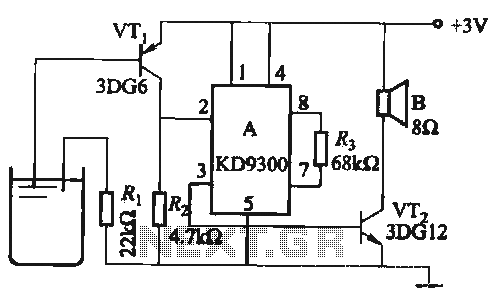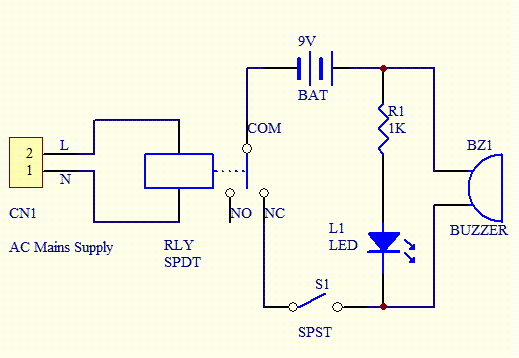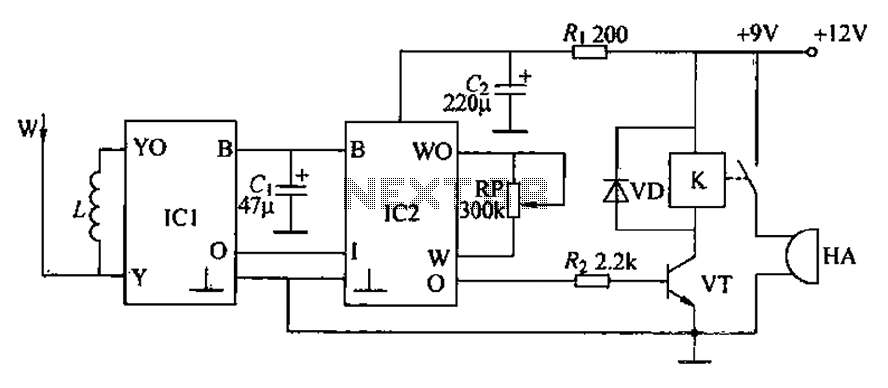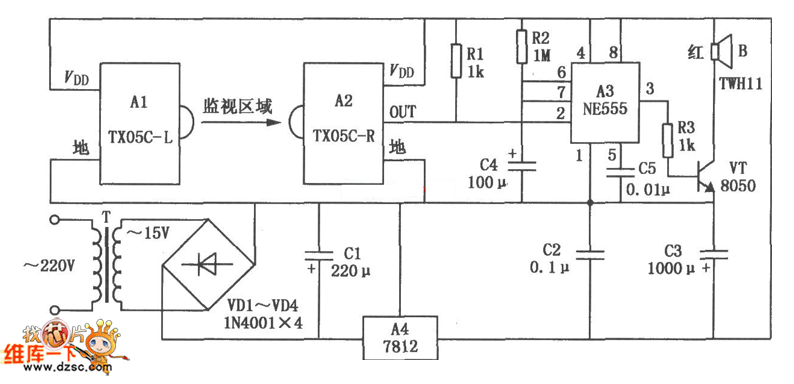
Two-Zone Burglar Alarm
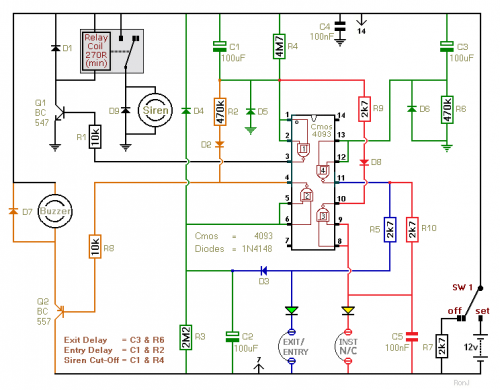
This two-zone alarm features automatic exit, entry, and siren cut-off timers. It was developed for the Beginner's Guide to CMOS Timers, providing a particularly detailed circuit description. An optional One-Time-Only module is available, which will deactivate the siren after the first ten minutes and prevent the alarm from activating a second time.
The two-zone alarm system operates on a dual-zone configuration, allowing for the monitoring of two distinct areas. The automatic exit timer enables users to leave the premises without triggering the alarm, while the entry timer allows for a grace period upon returning. The siren cut-off feature is particularly beneficial in reducing false alarms, ensuring the siren only activates under specific circumstances.
The core of the circuit utilizes CMOS timer ICs, which provide low power consumption and reliable timing functions. The circuit is designed to be user-friendly, with clear connections for the alarm sensors, siren, and power supply. The optional One-Time-Only module can be integrated into the main circuit, utilizing additional components such as a resistor-capacitor (RC) timing network to control the duration of the siren activation. This module ensures that the siren will automatically deactivate after ten minutes, thereby preventing unnecessary disturbances and allowing for a single activation per event.
The alarm system can be further enhanced with additional features, such as LED indicators for each zone, which provide visual confirmation of the system's status. The use of a microcontroller can also expand the system's capabilities, allowing for programmable settings and remote monitoring options. Overall, this two-zone alarm system represents a robust solution for security applications, combining ease of use with effective monitoring capabilities.This two-zone alarm has automatic exit, entry and siren cut-off timers. It was developed for the Beginner`s Guide To Cmos Timers. So it has a particularly detailed circuit description. There`s an optional One-Time-Only module. It will force the siren to switch off after the first ten minutes - and prevent the alarm from activating a second time 🔗 External reference
The two-zone alarm system operates on a dual-zone configuration, allowing for the monitoring of two distinct areas. The automatic exit timer enables users to leave the premises without triggering the alarm, while the entry timer allows for a grace period upon returning. The siren cut-off feature is particularly beneficial in reducing false alarms, ensuring the siren only activates under specific circumstances.
The core of the circuit utilizes CMOS timer ICs, which provide low power consumption and reliable timing functions. The circuit is designed to be user-friendly, with clear connections for the alarm sensors, siren, and power supply. The optional One-Time-Only module can be integrated into the main circuit, utilizing additional components such as a resistor-capacitor (RC) timing network to control the duration of the siren activation. This module ensures that the siren will automatically deactivate after ten minutes, thereby preventing unnecessary disturbances and allowing for a single activation per event.
The alarm system can be further enhanced with additional features, such as LED indicators for each zone, which provide visual confirmation of the system's status. The use of a microcontroller can also expand the system's capabilities, allowing for programmable settings and remote monitoring options. Overall, this two-zone alarm system represents a robust solution for security applications, combining ease of use with effective monitoring capabilities.This two-zone alarm has automatic exit, entry and siren cut-off timers. It was developed for the Beginner`s Guide To Cmos Timers. So it has a particularly detailed circuit description. There`s an optional One-Time-Only module. It will force the siren to switch off after the first ten minutes - and prevent the alarm from activating a second time 🔗 External reference
